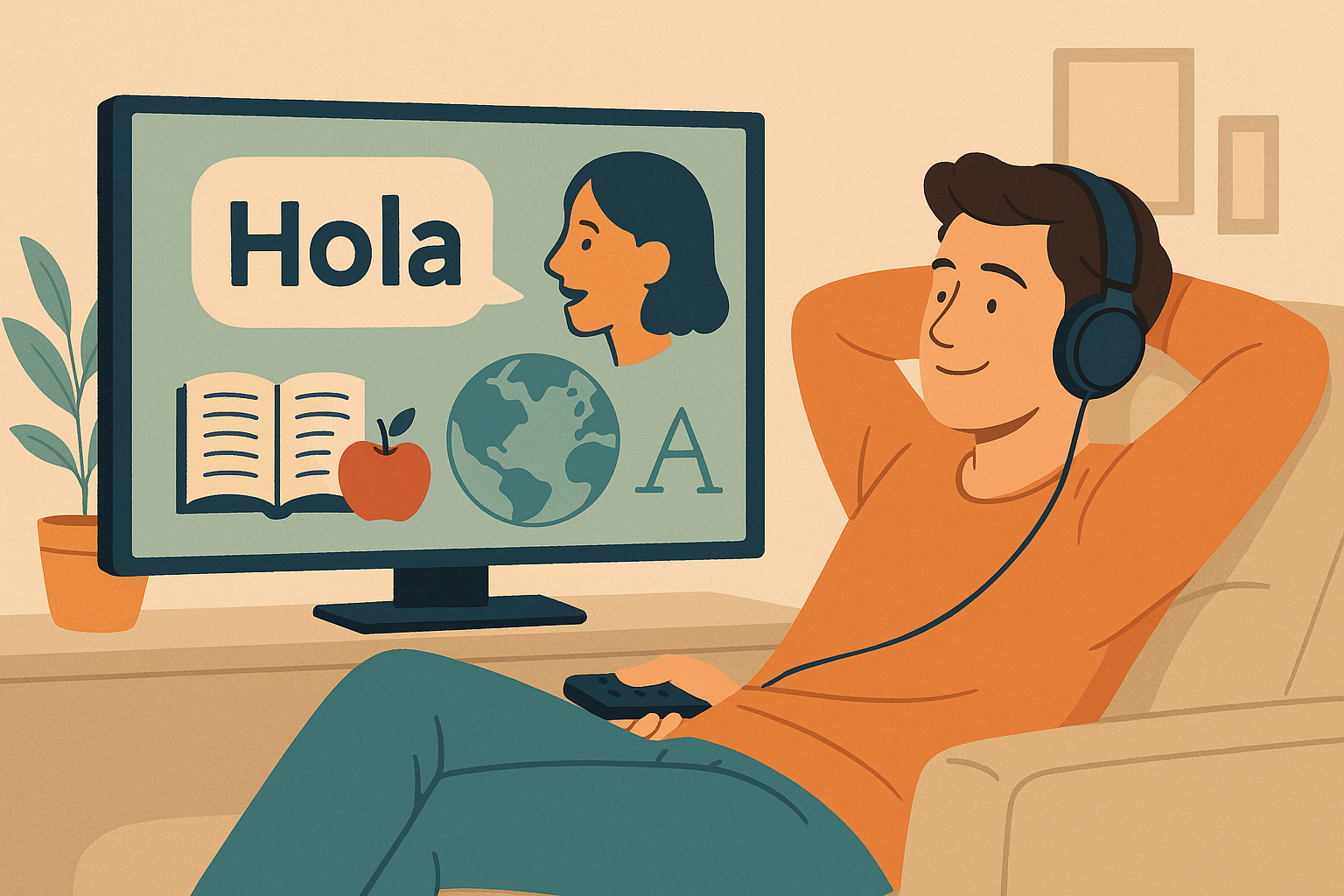What is Comprehensible Input?
What if I told you that you could learn a language without studying grammar, memorizing flashcards, or battling that pushy owl? Sounds too good to be true, right?
Well, that’s exactly what comprehensible input offers. It’s a language learning method based on one simple idea: you learn by understanding messages. You start with content that’s easy — supported by pictures, gestures, or simple words and gradually move to more advanced material. As long as you understand the general message, your brain does the rest. The learning happens naturally.
Comprehensible input means listening to language that’s just within your ability to understand. Ideally, around 85–95% of the words should already be familiar to you — just enough to follow the message, but with a few new pieces to absorb naturally.
This kind of input helps you acquire the language without effort. You understand the message, and your brain picks up the rest. It’s sometimes also called Automatic Language Growth (ALG).
The idea comes from linguist Stephen Krashen, often seen as the godfather of comprehensible input. He believed that we learn languages best when we’re exposed to input that’s just slightly above our current level — enough to stretch us, but not overwhelm us.
It works the same way you learned your first language as a child.
Do you remember your mother feeding you?
“Here comes the big aeroplane! Spoon! Spoon, spoon!”
Soon enough, you made the connection and you understood the word spoon.
Dreaming Spanish, a comprehensible input website started by another pioneer of the method, Pablo Román, uses this exact technique in its super beginner videos.
For example, Pablo will draw a train and say:
“Tren… MUY RÁPIDO… MUY MUY MUY RÁPIDO!”
It becomes obvious — even if you’ve never studied Spanish — that trains are very fast.
Later on, you move to content without visual aids — but by then, you already know enough words to understand the rest from context.
The magic of comprehensible input is that you learn each word bit by bit. Maybe the first time you hear it, you understand just 5%. Then you hear it again, and again, and again — and eventually, it sticks. You didn’t memorize it. You acquired it.
That’s the beauty of this method: words you acquire are far more memorable than words you try to memorize. Traditional study often leads to forgetting. Comprehensible input leads to real, lasting understanding.
🧠 Conclusion
Comprehensible input isn’t just a method — it’s how you learned your first language. And it still works.
You don’t need flashcards or grammar drills. You just need content you can mostly understand, and time. Your brain will do the rest — piece by piece, word by word.
In the next post, I’ll show you how to find great comprehensible input for your level, so you can start learning naturally, just like a kid again.
